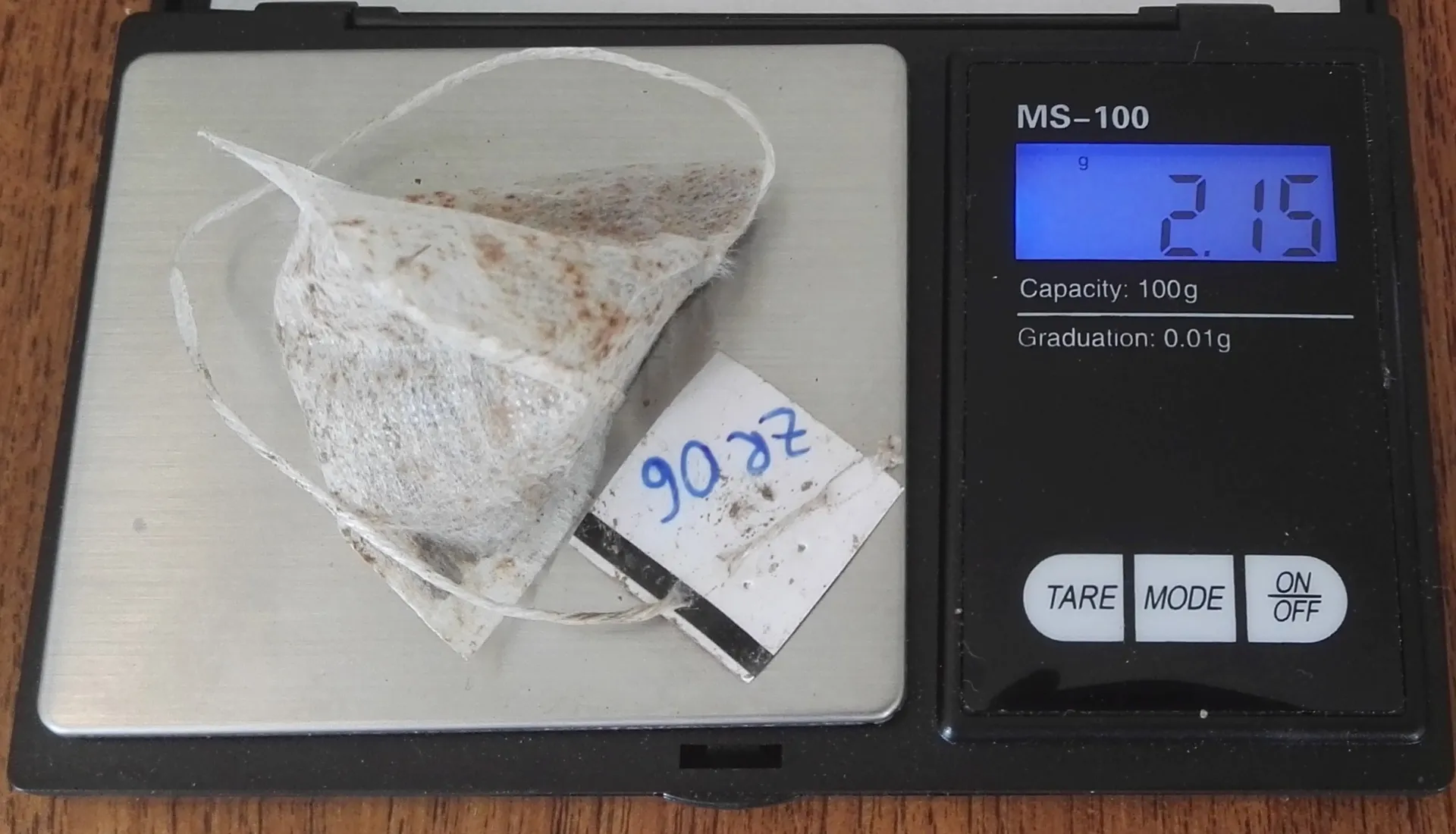The major challenge with organic manure applications is timing, as nutrients need to be released in sync with plant growth. However, it’s hard to know how quickly nitrogen from slurry and muck becomes available to plants in the soil. Surprisingly, tea bags can help to shed light on soil decomposition processes. This is no joke! In 2013, ecologist Joost Keuskamp and his team developed the tea bag method using Lipton brand green and rooibos tea bags. The method enables anyone, not just scientists, to assess soil activity in an internationally standardised way. Most recently, in 2024, an international citizen science project saw volunteers bury unused tea bags in the soil of the Rhön in Germany, only to dig them up again weeks later to gain new insights into the soil’s biological activity.
What the tea bags reveal about the soil
If carried out correctly, the tea bag method can be a cost-effective and practical way to measure the decomposition rate of organic matter. This is how it works: Tea bags of both varieties are first weighed to three decimal places on a precision scale, both empty and filled. The filled tea bag is then buried 8cm deep in the soil with the label still visible. This makes it easier to find the bags when they are dug up again 90 days later.


Once dug out, they must be left to dry completely in a warm place before being weighed again. The loss in weight indicates how much organic material soil-dwelling organisms have broken down in that time. Farmers are unlikely to be surprised that green tea made from camellia leaves (which has a carbon: nitrogen ratio of 12.8:1) decomposes faster than rooibos tea, which is made from the branches of the red bush (C:N=60.6:1) . The different speeds at which the tea varieties decompose enable the Tea Bag Index to be calculated: This combines the decomposition rate and the litter stabilisation factor.
Decomposition or permanent humus
The litter stabilisation factor shows how much organic matter in the teas remains undecomposed, even over a longer period of time. This stable fraction represents the carbon that can eventually form permanent humus. The litter stabilisation factor increases with the carbon sequestration potential of the soil and is therefore higher in peatlands, for example, than in tropical rainforests. Environmental conditions can play a key role; high soil temperatures and sufficient precipitation promote biological decomposition: The decomposition rate increases and the stable fraction (litter stabilisation factor) decreases. For example, a 2020 citizen science study found the decomposition rate in cooler Sweden was 0.008 to 0.012g/day, while in warmer Austria it was between 0.012 and 0.015g/day.
At the same time, Swedish soils had a litter stabilisation factor up to four times higher than Austrian soils.
Thanks to the standardised content of the tea bags, the results of the Tea Bag Index can be compared globally. This approach makes it possible to test the environmental conditions that affect soil decomposition activity, regardless of the quality of the material being decomposed.
Application of the tea bag method in agriculture
In 2020, Olav Holst from the Eberswalde University for Sustainable Development in Germany utilised the method in his bachelor’s thesis, to study the decomposition rate of grass-clover silage in sandy soil in Brandenburg. He filled the emptied tea bags with the silage and repeated the remaining steps. The grass-clover silage had a C/N ratio of 22.5:1, placing it between the two reference materials. Indeed, the teabag method enabled well-founded conclusions about the decomposability of grass-clover silage to be drawn quickly and inexpensively. Around 40% of its organic mass was broken down within 14 days, and 70% after 40 days. “This rapid decomposition indicates a swift availability of nitrogen,” says Olav.

About half of the nitrogen contained in the silage was released within 90 days – despite the period being characterised by drought – with a soil moisture levels just above the permanent wilting point. Farmers can use the tea bag method themselves to better estimate or compare the decomposition rate of organic manures and thus the availability of nutrients. Anyone wishing to do so can enter the collected data on the project’s international website. This also stores Tea Bag Index data from other sites worldwide for comparison.
A global project for climate change
With the help of the extensive data generated, it will be possible to better understand and assess the carbon cycle and its effects at local, regional, and global levels. This is important because the biological decomposition of organic materials in the soil produces greenhouse gases like CO2. The carbon storage potential of the soil therefore has an impact on global warming.
At the Swiss University of Zurich, the tea bag method is being taken to the next level with the help of underwear: In the 2021 “Proof by Underpants” project led by Marcel van der Heijden, the same new, white, cotton briefs were buried to test whether underpants are also suitable as a standardised method for measuring soil activity. Developed in collaboration with Agroscope, this spin on the Tea Bag Index proved successful, as by 2024 the Swiss were once again burying cotton briefs for science under the motto “Unterhosen runter!” (underpants down). Why? Well, what would you enjoy more: Burying a tea bag or a pair of underpants?
